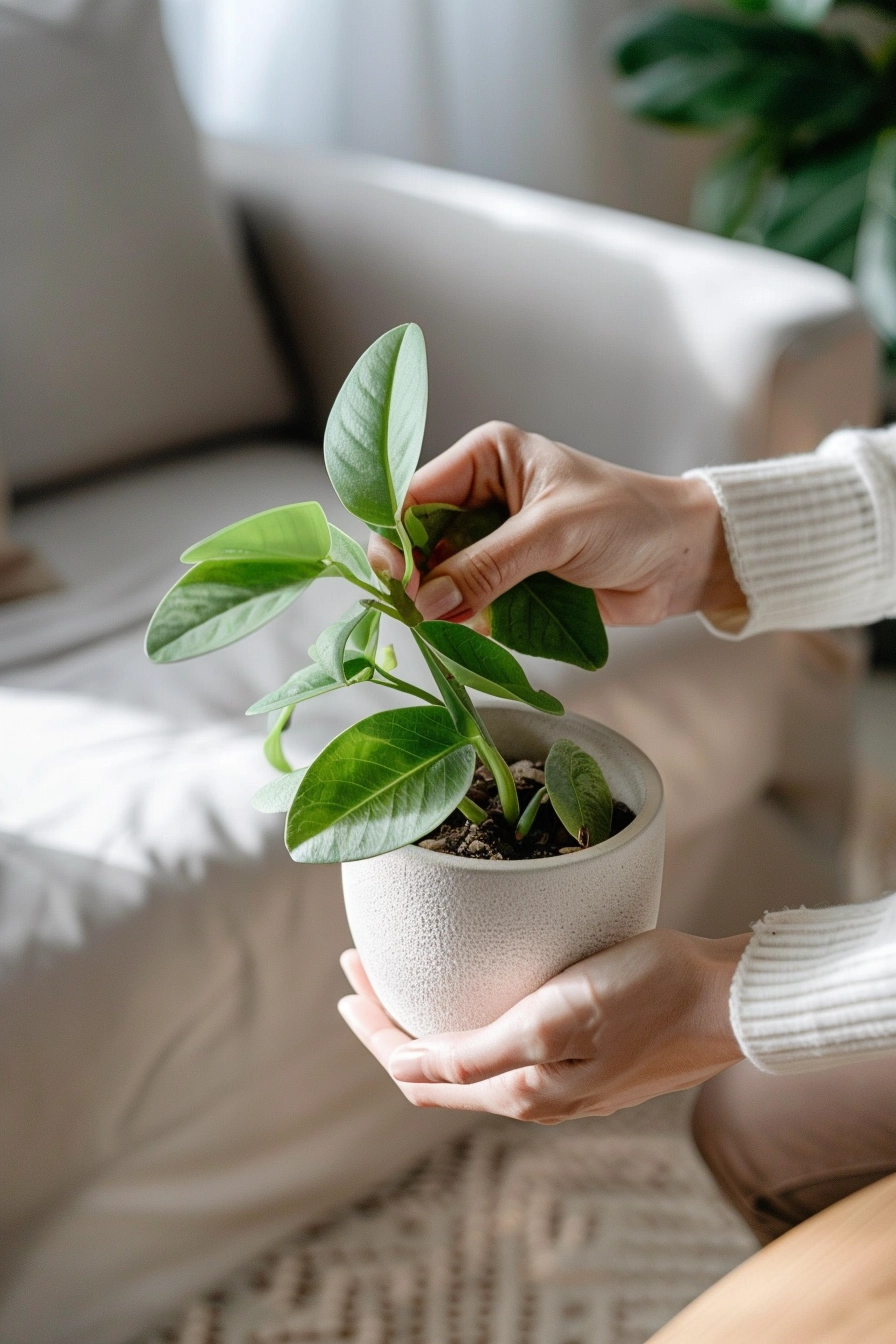Gardening can be a rewarding and therapeutic hobby, but sometimes even the most enthusiastic plant parents encounter a struggling houseplant. If you’ve noticed your favorite indoor greenery looking a little worse for wear, don’t panic just yet! Many houseplants have the potential to bounce back from adversity and regain their vibrant beauty.
Before you give up on a dying houseplant, it’s crucial to understand the telltale signs of distress and take appropriate action to revive it. In this guide, I’ll share some essential plant care tips and techniques to help you nurture your cherished green companion back to health.
Key Takeaways:
- Analyzing the plant’s ailment is essential before attempting revival.
- Flexible stems and green color indicate signs of life.
- Overwatering and underwatering are common causes of decline.
- Proper watering techniques, repotting, and trimming are key in the revival process.
- Pests and environmental conditions also impact a plant’s health.
Signs Your Houseplants Aren’t Very Happy
To determine if a houseplant is still alive, it’s important to inspect the stems and roots. Living stems will be flexible and have a green color. Healthy roots are white or yellow and plump.
There are several signs of dying houseplants or symptoms of a struggling plant that indicate an unhealthy houseplant.
- Overwatering: Signs of overwatering include waterlogged soil and browning roots. Overwatered plants may also exhibit yellowing leaves and mold or fungus growth on the soil surface.
- Underwatering: On the other hand, underwatering can lead to wilting leaves, dried or brittle leaf tips, and parched soil. The leaves may appear limp and the plant may become increasingly frail.
Inspecting the roots is also crucial in assessing the health of a houseplant. If the roots are overcrowded or circling the edges of the container, repotting may be necessary to provide the plant with ample space to grow and absorb nutrients.
Understanding the signs of an unhappy houseplant is essential in identifying the problem and taking the appropriate steps to revive it. By carefully observing the symptoms and addressing the underlying issues, you can help your houseplants regain their vitality and thrive once again.

How to Revive a Dying Houseplant
Reviving a dying houseplant can be a rewarding and satisfying experience. By implementing the right plant revival techniques, you can rescue a struggling plant and restore its health. One common cause of decline in houseplants is overwatering. To revive a dying plant, it’s essential to reduce the amount and frequency of watering. Allow the top layer of soil to dry between waterings, ensuring that the plant is not sitting in excessive moisture.
If the roots of the plant have rotted due to overwatering, repotting may be necessary. Choose a new pot that provides adequate drainage and use fresh, well-draining soil. When repotting, carefully trim any dead foliage and stems to encourage new growth. Removing the damaged parts of the plant allows it to redirect its energy to healthier areas.
Pests can also harm houseplants and contribute to their decline. Common pests include mealybugs, whiteflies, scale insects, and spider mites. It’s crucial to identify these pests and take appropriate measures to treat them. Regularly inspect your plant for signs of pest infestation, such as webs or tiny insects. You can use natural pest control methods or opt for organic insecticides if necessary.
Aside from pests and watering issues, it’s important to consider the environmental conditions in which your houseplant is situated. Factors such as light, temperature, and humidity can greatly impact a plant’s health. Ensure that your plant is receiving the appropriate amount of light for its specific species. Adjust the temperature if needed, avoiding extreme fluctuations that can stress the plant. Additionally, maintain the right humidity levels by misting the plant or using a humidifier.
Proper nutrition through fertilization is also essential in reviving a dying houseplant. Choose a balanced organic fertilizer and follow the recommended dosage instructions. Fertilize your plant regularly during the growing season, helping it regain its strength and vitality.
With a combination of proper watering, pest control, environmental considerations, and nutrition, you can successfully revive a dying houseplant. Remember to be patient and consistent in your efforts, as restoring plant health may take time. By following these plant revival techniques, you can rescue your struggling plant and bring it back to life!

Conclusion
Reviving houseplants requires patience, observation, and the right actions. To bring a struggling plant back to life, it’s crucial to understand its specific needs—such as proper watering, lighting, and environmental conditions.
In addition to meeting these needs, regular inspection, repotting, trimming, and treating pests are effective strategies in reviving dying plants. Remember that the plant may take some time to show signs of recovery, so consistency in care is key.
With the right care and attention, any dying houseplant can be revived and thrive once again. So, don’t give up on your precious green friends—follow these plant care tips and bring life back into your home.

